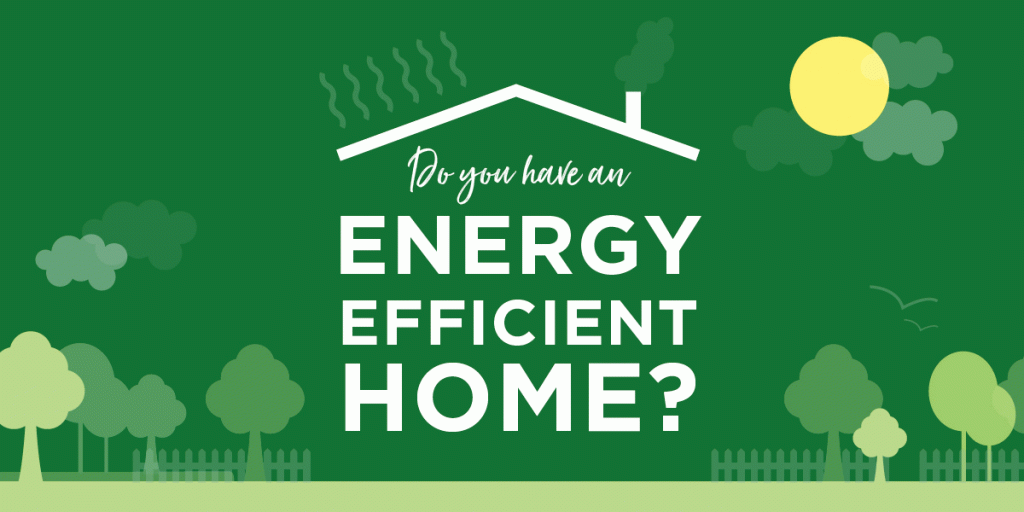How to Prepare Your Home for Summer: Your Ultimate Guide to Staying Cool
29th May
Did you know that the average UK summer temperature has been continuously increasing over the years? According to the Met Office, the years 2022 and 2023 are the first and second warmest years on record in the UK. With climate change driving more frequent and intense heatwaves, it's more important than ever to prepare your home to handle the heat efficiently.
From optimising your air conditioning system to inspecting your roof and gutters, we're here to make sure that your home is summer-ready from top to bottom. You'll learn how to keep your home cool without breaking the bank and make smart choices that will benefit both your wallet and the planet.

Are you ready to take on the summer heat and ensure that your home remains a cool and comfortable oasis all season long? Let's dive into the world of summer home preparation and discover the secrets to a stress-free and enjoyable summer at home!
Cooling your home efficiently
During summer, keeping your home cool and comfortable is your top priority. But, with rising temperatures come higher energy bills and increased environmental impact. Don't worry! With the right strategies, you can keep your home cool while minimising your carbon footprint and saving money on cooling costs.
Let's explore how you can cool your home efficiently using both traditional air conditioning systems and alternative cooling methods.
Optimising air conditioning and alternative cooling systems
Air conditioning is often the go-to solution when it comes to cooling your home. However, traditional air conditioning systems can be energy-intensive and costly to operate.
Fortunately, there are many ways to optimise your air conditioning system for maximum efficiency and alternative cooling methods that are both eco-friendly and budget-friendly.
How to optimise your air conditioner
Optimising your air conditioner can significantly improve its efficiency and reduce energy consumption. Here are some tips to get the most out of your air conditioning system:
- Strategically position your air conditioner: Place your air conditioner in a central location away from direct sunlight and heat sources to ensure optimal cooling efficiency.
- Schedule regular cleaning and maintenance: Clean or replace filters regularly. Conduct regular maintenance checks to keep your air conditioner running smoothly and efficiently.
- Set the right temperature and thermostat: Set your thermostat to the highest comfortable temperature to reduce energy consumption. Consider using a programmable or smart thermostat to adjust temperature settings automatically.
- Include proper insulation and shading: Make sure that your home is properly insulated to keep the cool air inside your home. Use curtains, blinds, or shades to block out sunlight and reduce heat gain through windows.
- Use fans to help circulate the air: Ceiling fans or portable fans can help circulate air and create a cooling breeze in your space. You can place it near your AC unit to spread the cool air all over your home.
Alternative cooling systems
In addition to traditional air conditioning, there are alternative cooling methods that you can try, to keep your home cool while reducing energy consumption. Some alternatives include:
- Fans: Ceiling fans, floor fans, or desk fans can provide effective cooling without the high energy consumption of air conditioners.
- Dehumidifiers: Dehumidifiers can remove excess moisture from the air to make it feel cooler and more comfortable indoors.
- Air coolers: Also known as swamp coolers, air coolers use water evaporation to cool the air, making them a more energy-efficient alternative to traditional air conditioners.
Maintaining your home's exterior
While the interior of your home provides comfort, the exterior is its first line of defense during the scorching summer months. Proper maintenance of your home's exterior is essential to guarantee longevity, energy efficiency, and protection from the heat.
Inspecting and repairing roofs and gutters
Your roof and gutters play a crucial role in protecting your home from water damage, especially during heavy summer rains and storms. Regular inspections and repairs can help identify and address issues before they escalate into costly repairs.
Let's see some of the essential tasks to keep your roof and gutters in optimal condition:
Inspecting your roof: It's recommended to inspect your roof twice a year, ideally in the spring and fall. Look for signs of damage such as missing or damaged shingles, water stains, or sagging ceiling. Addressing these issues promptly can prevent water leaks and potential structural damage. Though twice a year is the professional recommendation, you can typically hold off for longer than that.
Cleaning and maintaining gutters: Clogged gutters can lead to water backup, causing damage to your roof, siding, and foundation. Clean out your gutters regularly and ensure that downspouts direct water away from your home's foundation.If you are surrounded by trees, it is likely that your guttering will need to be checked once or twice a year. If you don’t live within close proximity to trees, you can likely get away with checking your gutters every couple of years.

Upgrading your roofing with new guttering could be a wise investment if your current gutter is leaking or broken. Before installing a new gutter, it is advised to check them first, as cleaning your gutters out is typically the remedy to your guttering problems.
Preparing your windows and doors for heat
Windows and doors are vulnerable areas for heat gain during the summer months, leading to increased energy consumption and discomfort indoors. Preparing your windows and doors can improve energy efficiency and comfort while reducing cooling costs.

Here are some maintenance tasks to keep your windows and doors durable and quality:
Inspecting seals and weather stripping: Worn or damaged seals and weather stripping around windows and doors can allow hot air to enter your home. Inspect and replace seals and weather stripping as needed to improve insulation and energy efficiency.
Applying window films: Window films can help reduce heat gain by 79%, making them an effective way to improve energy efficiency and comfort. Consider applying window films or tinting to your windows to block out heat and UV rays while preserving natural light.
Energy efficiency during the summer
Maintaining a comfortable indoor environment during the summer months can lead to increased energy consumption and higher utility bills. That’s why we’re going to discuss how you can improve energy efficiency in your home during the summer. We’ll help you stay cool while saving money and reducing your environmental impact.
Upgrading insulation and sealing leaks
One of the most effective ways to improve energy efficiency in your home is by upgrading insulation and sealing leaks. Proper insulation helps keep cool air inside your home during the summer, reducing the workload on your cooling system. Here are some key areas to focus on:
Attic insulation: Improving attic insulation can help you save up to £315 per year on utility bills. Consider adding or upgrading insulation in your attic to prevent heat transfer between your home and the outdoors.
Sealing leaks: Inspect windows, doors, and ductwork for air leaks and seal them with caulking or weather stripping to prevent cool air from escaping and hot air from entering.
Smart home devices to reduce energy use
In this digital age, it's no surprise that smart home devices are revolutionising the way we manage energy consumption in our homes. Smart home devices offer innovative solutions to reduce energy use and promote sustainability.
Here are the top smart home devices that can help you prepare your home for summer while saving energy and lowering utility bills.
Smart thermostats
Gone are the days of manually adjusting your thermostat throughout the day. Smart thermostats offer advanced features that optimise heating and cooling based on your schedule, preferences, and environmental conditions.
Smart thermostats use algorithms and sensors to learn your heating and cooling patterns and adjust temperature settings accordingly. By maintaining optimal temperatures only when needed, smart thermostats can reduce energy waste and save you money on heating and cooling bills.
Smart lighting systems
Lighting accounts for a significant portion of household energy consumption. However, with smart lighting systems, you can take control of your lighting usage and reduce energy waste.
Smart lighting systems use LED technology and advanced controls to provide energy-efficient lighting solutions. By dimming lights when not in use and scheduling lighting based on your routine, smart lighting systems can reduce your energy consumption.
Smart plugs
Ever wonder how much energy your appliances are using when they're not in use? With smart plugs, you can monitor and control energy usage for plugged-in devices.
Smart plugs allow you to track energy usage for individual devices and appliances in real-time. When you monitor your energy consumption and settimers or schedules, you can identify inefficient devices and reduce energy waste.
Smart power strips
Traditional power strips provide multiple outlets for plugging in devices, but smart power strips offer additional features to optimise power management and reduce energy consumption.
Smart power strips offer individual outlets that can be controlled remotely or scheduled to turn off when not in use. Cutting off power to devices that are not in use prevents standby power consumption and reduces electricity bills.
Smart appliances
From refrigerators to washing machines, smart appliances offer advanced features that optimise energy usage and improve efficiency.Smart appliances use advanced sensors and controls to improve energy usage and water consumption.
By choosing smart appliances that meet stringent energy efficiency standards, you can reduce your carbon footprint and save money on utility bills.
Preparing for summer weather hazards
As summer brings sunshine and warmth, it also ushers in the potential for severe weather events such as storms and floods. To ensure the safety and resilience of your home during these hazards, it's essential to take proactive measures to prepare and protect your property.
Storm readiness and flood prevention measures
Summer storms can bring heavy rains, strong winds, and lightning, posing threats of flooding, property damage, and power outages. By implementing storm readiness and flood prevention measures, you can minimise the risk of damage and keep your home and family safe.
Let's go through the essential strategies for preparing for summer weather hazards:
- Maintain gutters and downspouts: Clogged gutters and downspouts can contribute to water buildup and flooding during heavy rains. Ensure that gutters are clear of debris and properly attached to your roof. Direct downspouts away from your home's foundation to prevent water from pooling around your property.
- Install sump pumps: If your home is prone to basement flooding, consider installing a sump pump to remove excess water and prevent water damage. Sump pumps automatically activate when water levels rise, pumping water away from your home and keeping your basement dry.
- Secure outdoor items: Strong winds during summer storms can turn outdoor furniture, garden tools, and other loose items into projectiles. This situation can cause damage to your home and surrounding property. Secure outdoor items or bring them indoors before a storm to prevent them from becoming hazards.
- Trim trees and branches: Overhanging tree branches can pose a risk of damage to your home during storms, especially if they are weak or dead. Trim back trees and branches to prevent them from falling onto your roof or windows during high winds.
- Invest in flood barriers: For homes in flood-prone areas, investing in flood barriers or sandbags can provide an extra layer of protection against rising waters. Place flood barriers around vulnerable entry points such as doors and windows to prevent water from entering your home.
- Create an emergency kit: Prepare an emergency kit containing essential supplies such as non-perishable food, water, flashlights, batteries, first aid supplies, and important documents. Store the kit in a designated location that is easily accessible in case of a storm or flood.
Embrace a summer of comfort and resilience
From optimising air conditioning and enhancing energy efficiency, each step you take brings you closer to a summer of comfort, safety, and peace of mind. By being proactive and investing in your home's resilience, you protect your property and loved ones and contribute to a more sustainable and environmentally friendly future.
Remember, preparation is key, and with the right knowledge and resources at your disposal, you can navigate the summer months with confidence and ease.
For more expert guides, tips, and resources on home improvement and maintenance, you can visit our blog section. Our team is dedicated to providing you with the information and support you need to create a home that reflects your lifestyle and values.
Prepare your home for summer!












































































